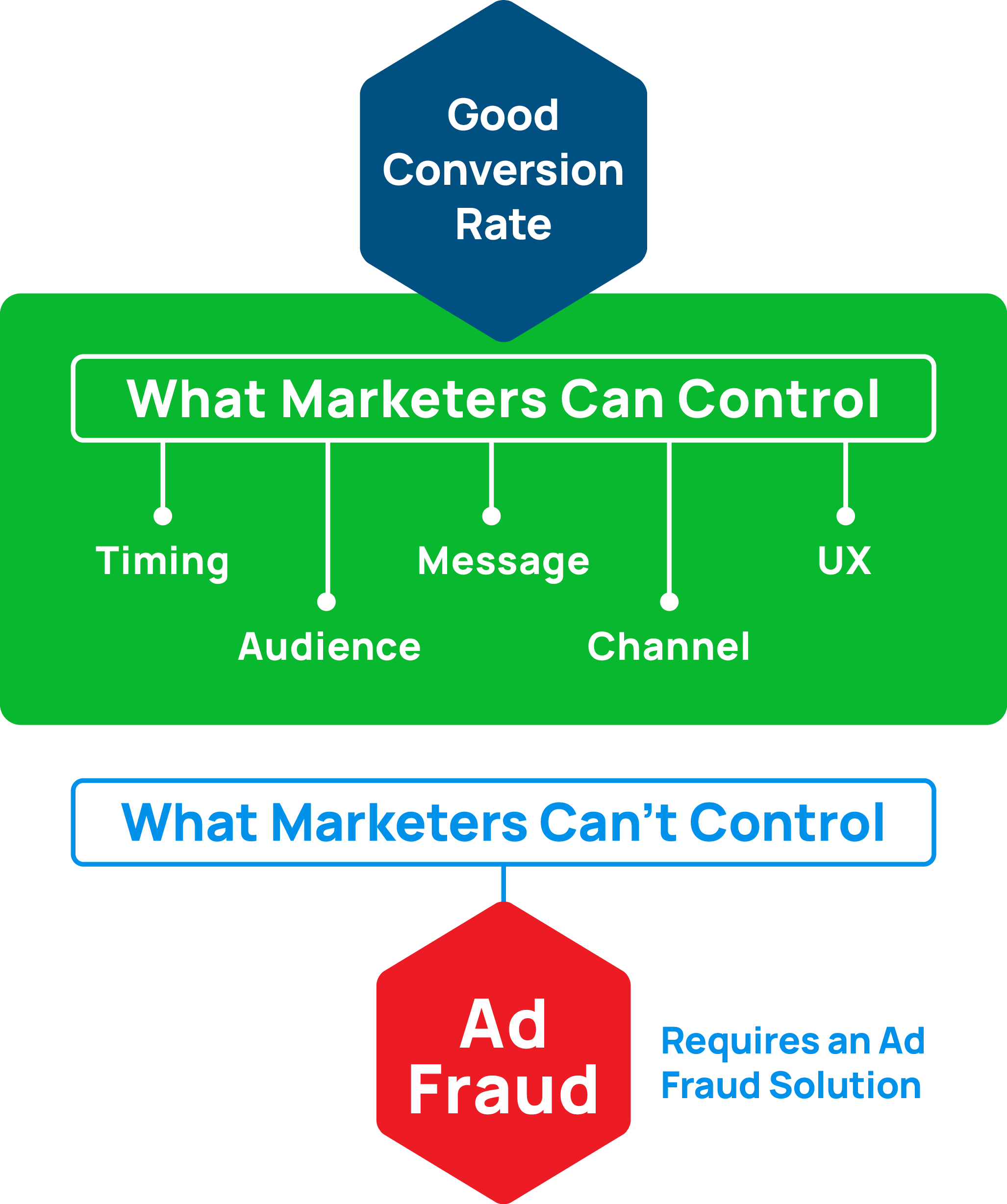Why Is My Conversion Rate Low? Top 3 Reasons

It’s a question that’s been around since the beginning of advertising: “How do we know it’s working?” Before digital advertising, the simple answer was to look at sales results: if they were up, the campaign was working, without any further proof or consideration of other factors; if sales were down, the ads simply weren’t working, again without any other factors considered.
With digital campaigns, marketers look to the conversion rate to answer this age-old question. When creating campaigns, marketers begin with the end in mind. In other words, they determine whether the goal of the campaign is to grow the company’s email marketing list, drive visitors to a landing page, generate leads, or complete a sale on an ecommerce site, to name a few conversion types.
The conversion rate reflects the results of the campaign. For example, if a lead generation campaign drives 100 website visitors to a landing page with a form and 15 of those visitors have completed, consented, and submitted the form, the campaign has a 15 percent conversion rate. It’s unlikely that all those leads will convert to actual sales, which is why a campaign can be successful by marketing standards without necessarily showing an immediate effect on sales of your product or service.
If conversions aren’t directly driving sales, why does a low conversion rate matter? If a high conversion rate means the campaign worked to attract potential customers, what does a low conversion rate mean? How can you improve your campaign conversion rate? Let’s dive in to answer these questions and more.
The Highs and Lows of Conversion Rates and Why They Matter
According to LocaliQ’s 2023 Google Ads Industry Benchmarks report, search ad campaigns running between April 2022 and March 2023 saw a significant decrease in conversion rates despite an increase in click-thru rates. At the same time, the cost per lead significantly increased while the cost per click only slightly increased. Since paid search makes up more than 40 percent of digital ad spend, marketers need to ensure those campaigns convert as expected.
For digital marketers, metrics matter, but knowing what to expect from campaigns is a challenge. The average conversion rate in the above-referenced report was just over seven percent, but this varies widely by industry and perhaps by campaign goal. Looking at your industry’s average conversion rates and how your own previous campaigns have performed can help you set intelligent benchmarks for a good conversion rate.
A high conversion rate indicates a digital marketing campaign is targeting the right audience at the right place and time with the right message delivered through the right channels. While a high conversion rate may not necessarily mean an immediate jump in sales, it does indicate a potential increase in brand awareness among your target audience, and it adds interested buyers to your pipeline so they can be nurtured until they are ready to convert.
A low conversion rate lets marketers know that the campaign is somehow missing the mark and wasting ad dollars. If campaign data indicates poor performance, marketers have the opportunity, if not an obligation, to pull the plug and re-evaluate. Low conversion rates impact your company’s bottom line, wasting ad dollars and time and lowering marketing ROI.
There are a few reasons a campaign may not hit the mark, and it will likely take some digging to determine which one or more factors are causing your campaign to underperform.
Why Are My Conversion Rates Lower Than Expected?
Before you can improve your conversion rate, you need to discover why your campaign is underperforming in the first place. Looking at some of the most common reasons, you may avoid ditching the entire campaign; a few simple tweaks may salvage the time and effort already invested and set you up to increase your conversion rate.
1. Not Targeting the Right Audience
Remember, conversion is all about the right message to the right audience at the right time through the right channel or platform. There’s no guarantee that this will happen every time, but there are things you can do to improve to increase conversion.
To get the right audience, look at your best existing customers: age, gender, geographic location, etc. For B2B, look at job titles and industries.
Does your message and creative appeal to this audience to make them want to learn more? Are they ready to buy?
Are your ads running where your target audience will see them? If you’re placing display ads programmatically, they may be appearing on sites that your audience isn’t visiting, or they may be running on made-for-advertising (MFA) sites or sites known for spreading misinformation.
2. Confusing User Experience
You might be targeting the right audience, but are you making it easy for them to convert? A poor user experience frequently leads to poor campaign performance. Some things to look at from a user perspective include:
- Does the search or display ad link work? Broken links can’t convert.
- Does the website or landing page load quickly on any device? Users’ time is valuable; if your website has slow load times, they may abandon it.
- Is the landing page consistent with your website and brand? Is your logo there, as well as standard brand elements? Users want to know they are on a legitimate site they can trust with their personal information.
- Is the call to action clear? Are users finding what the ad they clicked on promised? Is it obvious where they should enter their information or where they should click to download a report? Maybe you’re asking for more information than you need or that the prospect is willing to provide. If you see anything that may be confusing or complicated, clean it up and make sure you are asking visitors to take only one action.
- Are you inadvertently preventing them from converting? Is there a pop-up blocking the page? Does your chatbot creep up in the corner as they arrive? These “extras'' create clutter and confusion; they’re the equivalent of a cluttered, disorganized store or that pesky salesperson that appears out of nowhere the second you stop to look at the merchandise.
3. You’re a Victim of Ad Fraud
This presents unique challenges in identifying and addressing the issue. At first, it may appear that your campaign is converting as well as (or even better than) expected and at a rapid rate, but then you get a lot of “unsubscribes” or undeliverable emails. The contact information from your lead generation campaign is invalid, or your sales reps reach angry and confused people who aren’t expecting your call or they are not interested in buying your products.
When this happens, you’re likely looking at ad fraud. Bots and human fraud farms can generate a lot of clicks and quickly fill out contact forms. This enables them to collect revenue while your campaign falls flat.
Addressing issues with the target audience and campaign elements can usually be handled internally or with the help of your marketing agency. Addressing fake traffic and ad fraud requires expert help, which only an ad fraud solution can provide.

Learn how Anura helped QuinStreet increase conversions without increasing marketing spend.
How An Ad Fraud Partner Can Help Improve Your Conversion Rate
An ad fraud solution should be an integral part of your conversion rate optimization strategy. The right ad fraud partner can help improve your conversion rates by identifying the source(s) of fake traffic that won’t convert and then taking proactive measures to stop fake traffic from clicking on your ads and completing your contact or lead generation forms. This also helps you save money and improve your marketing ROI since you won’t have to pay out for fraudulent conversions, and you can direct your resources toward channels that drive actual results.
It's not unusual for us to find an average ad fraud rate of 25% when we conduct a free trial for prospects. If they’re using programmatic ad placement, we may find as much as 50% of their digital ad budget is lost to sophisticated fraud.
Let us show you how much fraud you have today, where it’s coming from, and how you can increase conversion without increasing your marketing budget!

